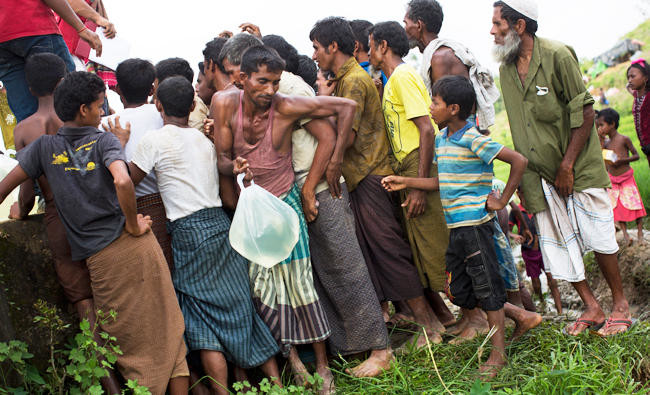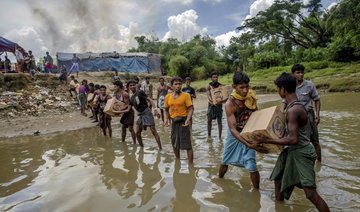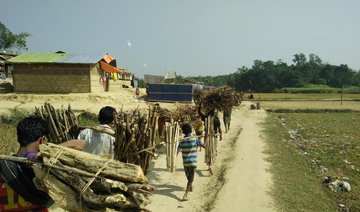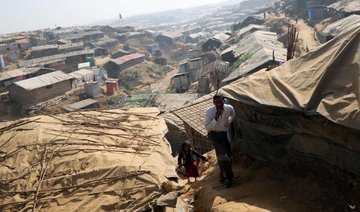DHAKA: UN agencies and Bangladesh government have assessed the need for $950 million fund to run the relief operations in Rohingya camps of Cox’s Bazar for another 10 months.
The move comes amid concerns that repatriation of refugees might take more time, while monsoon season will soon arrive in Bangladesh putting nearly 100,000 Rohingya refugees at risk of floods and landslide, according to computer modeling of the UNHCR.
The Rohingya camps are concentrated in southern part of the country that records the highest rainfall. The rains usually begin in April and fall heaviest in July, according to the Bangladesh Meteorological Department.
The biggest makeshift refugee camps of Kutupalong and Balukhali could have up to one-third of their land flooded during monsoon season, leaving more than 85,000 refugees homeless, according to the UNHCR. Another 23,000 refugees live on slopes at risk of landslide.
The UN will seek donor group assistance in the upcoming pledge meeting in Geneva scheduled for mid March.
“All UN agencies will be launching a Joint Response Plan in Geneva on March 16, seeking new funding for the Rohingya response for the rest of the year,” says Caroline Gluck, spokesperson for the UNHCR at Cox’s Bazar, Bangladesh.
“And we have been extremely grateful for the donor support until now. We hope the strong support will continue, moving forward, as the emergency needs are unlikely to decrease,” she adds.
Mohammad Abul Kalam, commissioner of the Refugee Relief and Repatriation Commission (RRRC), told Arab News “In this new assessment of $950 million, we have included 25 percent amount for the wellbeing of the host communities since their livelihood is greatly affected by hosting these refugees.”
However, Rohingya refugees living in high-risk areas are being relocated to safer zones. An additional 500 acres of land have been allocated for the resettlement of 100,000 refugees who are at a great risk of mudslide in the upcoming monsoon season.
“We have already built quite a number of new sheds in the newly allocated area. Around 24,000 refugees from 400 families have been shifted to the new location who were extremely vulnerable to mudslide. Gradually, we will shift the rest of the 76,000 refugees as well. We expect to complete the process in the next two months,” said Kalam.
The UNHCR finds lack of available land as a big constraint in refugee resettlement and is therefore now focusing on improving circumstances inside the settlements, like raising bridges, reinforcing steps with sandbags, improving drainage system and strengthening the retaining walls.
However, the UNHCR feels more land is required to relocate the refugees.
“This land (500 acres), due to its topography, is only likely to be able to accommodate around 50,000 people. We estimate many more would need relocation,” says Caroline.
UN, Bangladesh govt to seek $950m pledge for Rohingya refugees
UN, Bangladesh govt to seek $950m pledge for Rohingya refugees













